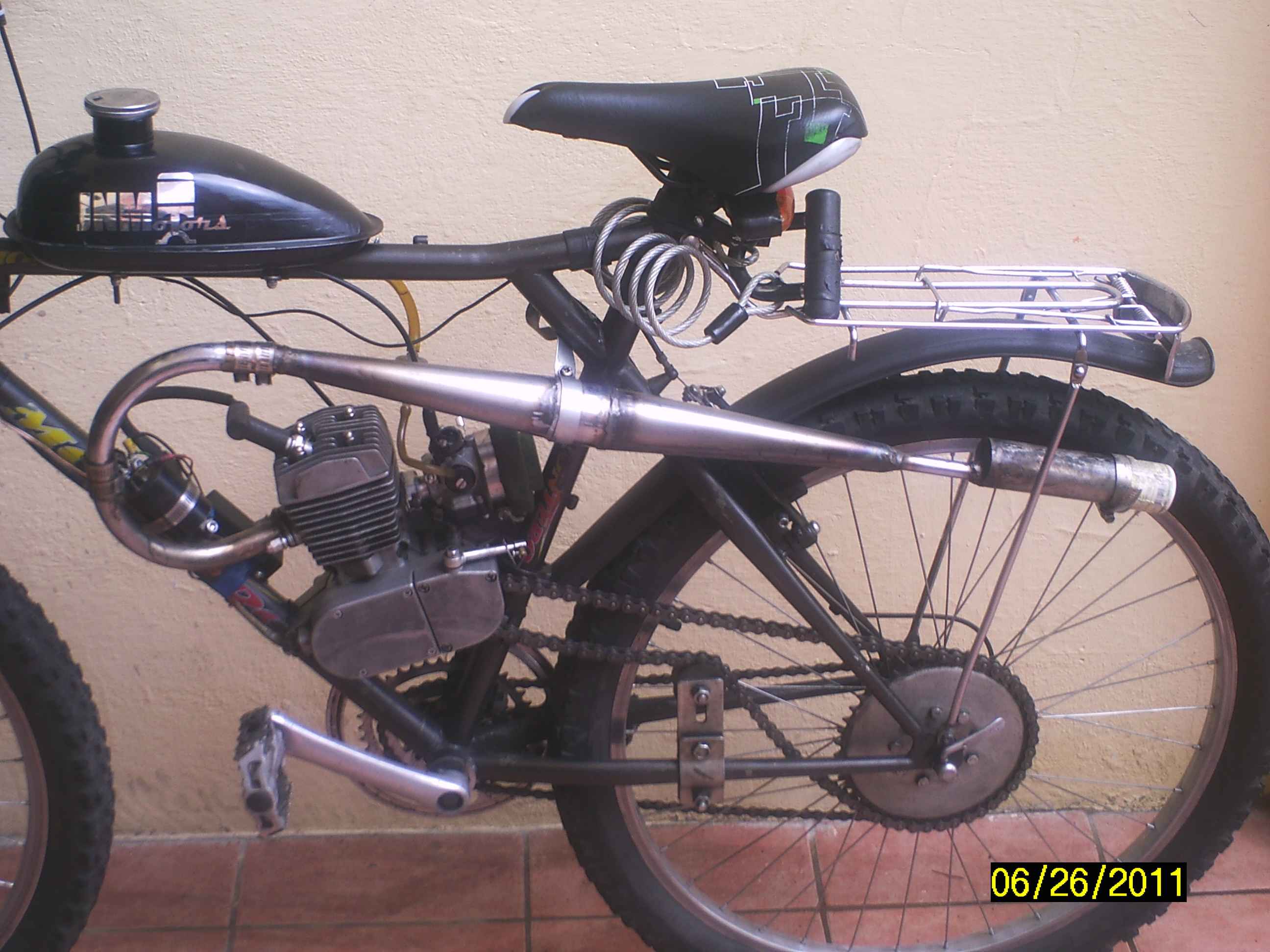
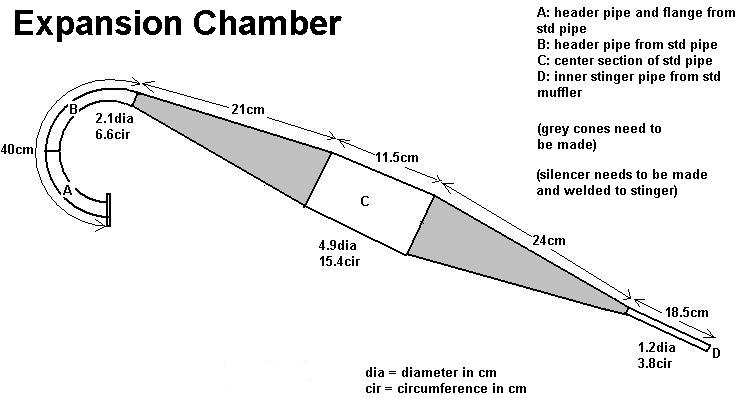 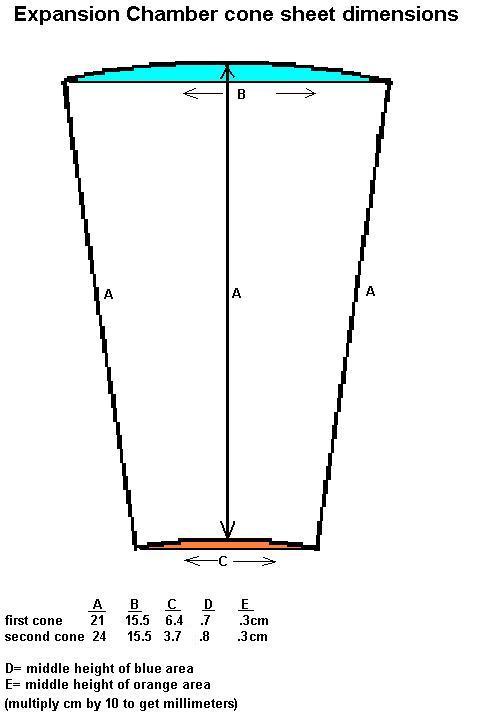 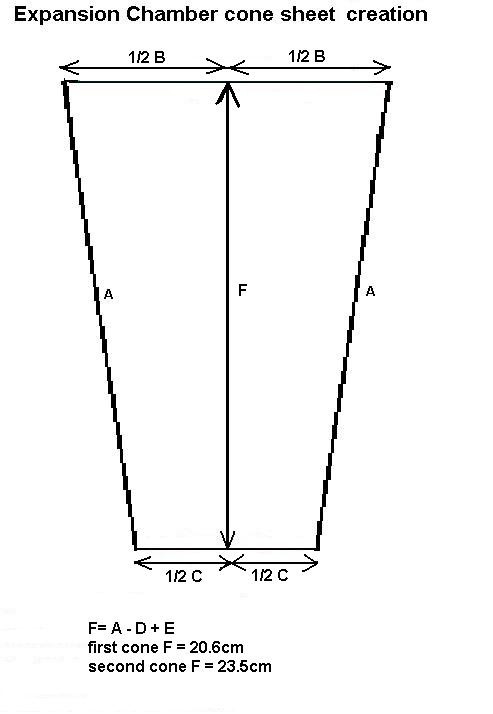 Below shows the pipe dimensions given by the 2 Stroke Wizard that you can use if you want it to be just right. The bottom pipe is what I am proposing as an easy to make alternative. 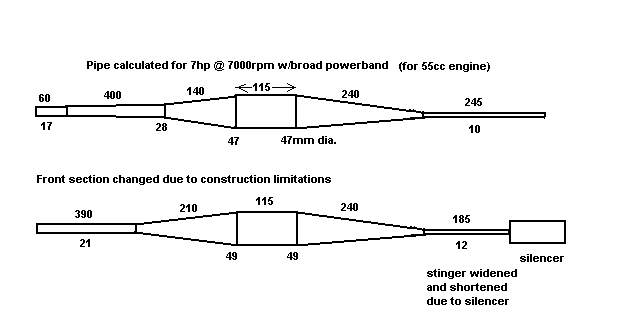 After reading the performance book by Graham Bell I calculated this new pipes peak power rpm as 7500. But a standard 48cc Grubee engine has a peak rpm of 5700. In order to make the pipe match that rpm this pipe would have to have a longer belly length of 21cm. For a free on-line pipe dimension calculator that gives similar results as the 2 Stroke Wizard click here. Use these inputs: 40mm bore, 38mm stroke, 136 degree exhaust open duration (which should be more if you have raised the port), 17mm EXD (equivalent round exhaust port diameter), 5700 rpm, 4.85 power. How does this DIY pipe compare to pipes available for purchase for this engine? The main two characteristics of an expansion chamber are the length from the piston to the midway point of the final cone, and the angle of the final cone. The longer it is (due to a small angle), the wider the powerband. The steeper/larger the angle is, the shorter the powerband but with greater effect (supercharging the engine). This DIY pipe has a small final cone angle which gives it a broader powerband, especially necessary for a one speed bike. And the length should be made by you to perfectly fit the peak rpm's of the engine. If you do that then this pipe is better than anything offered. Look at how the final cone angle is greater on other available pipes than this one. That means they have a short powerband for racing with mutiple gears. And they are made to be closer to the engine which means they will offer a high rpm powerband which is not what you want with these engines. Click here to read how to exactly determine the powerband of an expansion chamber. |